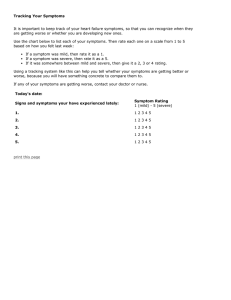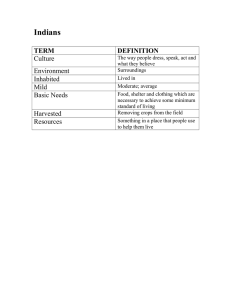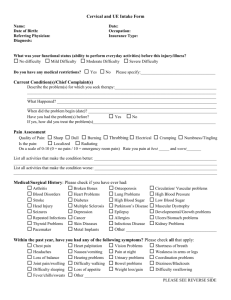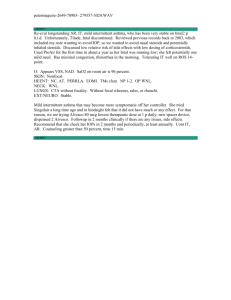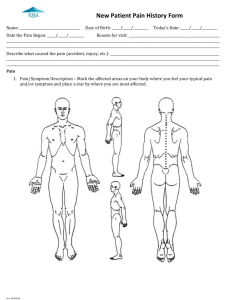Devices Designed for Safety mild® Typical Clinical Findings mild
advertisement
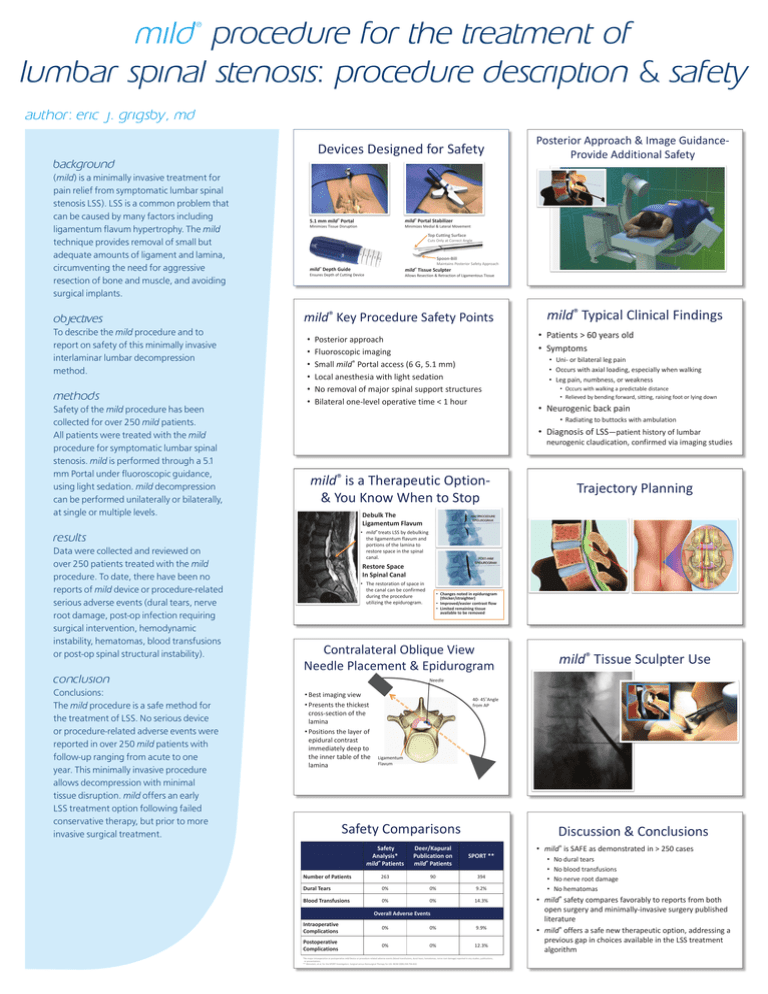
mild procedure for the treatment of lumbar spinal stenosis: procedure description & safety ® author: eric j. grigsby, md Devices Designed for Safety background (mild) is a minimally invasive treatment for pain relief from symptomatic lumbar spinal stenosis LSS). LSS is a common problem that can be caused by many factors including ligamentum flavum hypertrophy. The mild technique provides removal of small but adequate amounts of ligament and lamina, circumventing the need for aggressive resection of bone and muscle, and avoiding surgical implants. objectives To describe the mild procedure and to report on safety of this minimally invasive interlaminar lumbar decompression method. methods Safety of the mild procedure has been collected for over 250 mild patients. All patients were treated with the mild procedure for symptomatic lumbar spinal stenosis. mild is performed through a 5.1 mm Portal under fluoroscopic guidance, using light sedation. mild decompression can be performed unilaterally or bilaterally, at single or multiple levels. 4.7M 5.1 mm mild® Portal mild® Portal Stabilizer Minimizes Tissue Disruption Minimizes Medial & Lateral Movement Top Cutting Surface Cuts Only at Correct Angle Spoon‐Bill Maintains Posterior Safety Approach mild® Depth Guide mild® Tissue Sculpter Ensures Depth of Cutting Device mild® • • • • • • Allows Resection & Retraction of Ligamentous Tissue Key Procedure Safety Points Posterior approach Fluoroscopic imaging Small mild® Portal access (6 G, 5.1 mm) Local anesthesia with light sedation No removal of major spinal support structures Bilateral one‐level operative time < 1 hour • Patients > 60 years old • Symptoms • Uni‐ or bilateral leg pain • Occurs with axial loading, especially when walking • Leg pain, numbness, or weakness • Occurs with walking a predictable distance • Relieved by bending forward, sitting, raising foot or lying down • Neurogenic back pain • Diagnosis of LSS—patient history of lumbar neurogenic claudication, confirmed via imaging studies mild® is a Therapeutic Option‐ & You Know When to Stop Trajectory Planning Debulk The Ligamentum Flavum • mild® treats LSS by debulking the ligamentum flavum and portions of the lamina to restore space in the spinal canal. Restore Space In Spinal Canal • The restoration of space in the canal can be confirmed during the procedure utilizing the epidurogram. • Changes noted in epidurogram (thicker/straighter) • Improved/easier contrast flow • Limited remaining tissue available to be removed 6 Contralateral Oblique View Needle Placement & Epidurogram conclusion Conclusions: The mild procedure is a safe method for the treatment of LSS. No serious device or procedure-related adverse events were reported in over 250 mild patients with follow-up ranging from acute to one year. This minimally invasive procedure allows decompression with minimal tissue disruption. mild offers an early LSS treatment option following failed conservative therapy, but prior to more invasive surgical treatment. mild® Typical Clinical Findings • Radiating to buttocks with ambulation results Data were collected and reviewed on over 250 patients treated with the mild procedure. To date, there have been no reports of mild device or procedure-related serious adverse events (dural tears, nerve root damage, post-op infection requiring surgical intervention, hemodynamic instability, hematomas, blood transfusions or post-op spinal structural instability). Posterior Approach & Image Guidance‐ Provide Additional Safety mild® Tissue Sculpter Use Needle • Best imaging view • Presents the thickest cross‐section of the lamina • Positions the layer of epidural contrast immediately deep to the inner table of the lamina 40‐ 45Angle from AP Ligamentum Flavum Safety Comparisons Discussion & Conclusions Safety Analysis* mild® Patients Deer/Kapural Publication on mild® Patients SPORT ** Number of Patients 263 90 394 Dural Tears 0% 0% 9.2% Blood Transfusions 0% 0% 14.3% Overall Adverse Events Intraoperative Complications 0% 0% 9.9% Postoperative Complications 0% 0% 12.3% *No major intraoperative or postoperative mild Device or procedure‐related adverse events (blood transfusions, dural tears, hematomas, nerve root damage) reported in any studies, publications, or presentations. ** Weinstein, et al, for the SPORT Investigators. Surgical versus Nonsurgical Therapy for LSS. NEJM 2008;358:794‐810. • mild® is SAFE as demonstrated in > 250 cases • • • • No dural tears No blood transfusions No nerve root damage No hematomas • mild® safety compares favorably to reports from both open surgery and minimally‐invasive surgery published literature • mild® offers a safe new therapeutic option, addressing a previous gap in choices available in the LSS treatment algorithm

